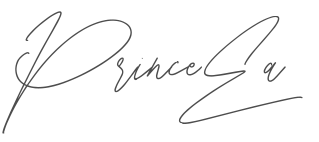How to Set Goals that Align with Your True Purpose

Setting goals is a common practice—we all have aspirations, big or small, that drive us. But while many goals come and go, purpose-driven goals are different. These are goals that aren’t just about hitting a target; they’re about creating a life that genuinely reflects who we are and what we value. Purpose-driven goals are rooted in what truly matters to us, bringing a deeper sense of fulfillment and motivation to the journey.
In this article, you’ll learn how to create goals that not only align with your values but also have lasting meaning. We’ll explore practical steps to set objectives that feel authentic to who you are and adapt naturally to the ups and downs of life. If you’re ready to set goals that resonate deeply, let’s dive in and discover how purpose-driven goals can be a powerful guide toward a more satisfying life.
Defining and Setting Purpose-Driven Goals
Purpose-driven goals are different from the usual goals we might set out of habit or because we think we “should” achieve something. These goals are about getting in touch with what truly matters to us, what gives us a sense of meaning, and then aligning our actions with those values. When our goals reflect who we are and what we care about, they feel more rewarding and keep us motivated even when things get tough.
Reflecting on What Matters Most
Before jumping into goal-setting, take a step back. Think about the times when you felt truly happy or fulfilled. Maybe it was a time you helped someone, created something, or learned something new. What do those moments have in common? They can give you clues about your core values—things like growth, creativity, connection, or helping others. Once you understand these, you’ll have a foundation for setting goals that feel authentic and exciting.
With your values in mind, you’re ready to start setting goals that actually mean something to you. If “learning and growth” is a core value, you might set a goal to take on one new skill each year. Or if “making a difference” drives you, you could aim to find ways to contribute through work or volunteering. The point is to make each goal connect with what genuinely matters to you—that way, the motivation to achieve it will feel natural and lasting.
Using SMART Goals with a Twist

The SMART framework (Specific, Measurable, Achievable, Relevant, and Time-bound) is a classic way to make goals clear, but let’s give it a purpose-driven spin:
- Specific: Instead of vague intentions, be clear about how your goal reflects a personal value.
- Measurable: Decide how you’ll track progress so you know you’re moving forward.
- Achievable: Challenge yourself, but keep it realistic so you don’t get discouraged.
- Relevant: Ask, “Does this goal genuinely align with what I care about?”
- Time-bound: Set a timeframe that pushes you but doesn’t overwhelm you.
By using SMART goals with your personal values as the focus, you’ll end up with goals that are not just achievable but genuinely meaningful.
Key Principles for Effective, Purpose-Driven Goal-Setting
When we’re aiming to set goals that truly reflect who we are, there are a few principles that can make a big difference in keeping us motivated and grounded along the way. Purpose-driven goals require a bit more thought than the typical to-do list items because they’re tied to our values and what genuinely matters to us. Let’s dive into some principles that help purpose-driven goals stay meaningful and achievable.
One of the most important parts of goal-setting is getting specific. A vague goal like “I want to be healthier” often doesn’t take us very far because it’s hard to measure, and it’s too broad to keep us focused. But when you get specific, you give yourself a clear target—something you can picture and actually work toward. Instead of “I want to be healthier,” you might say, “I’ll walk for 30 minutes every morning.” This way, you’ve given yourself a concrete action that brings your goal to life.
At the same time, the goal needs to be challenging enough to push you but not so overwhelming that it feels impossible. Finding this balance means choosing goals that stretch you just outside your comfort zone, where growth happens. A challenging yet achievable goal—like running a 5K if you’ve been getting into fitness—creates excitement and keeps you motivated.
True Commitment: Aligning Goals with What Matters Most to You

Committing to a goal feels natural when it aligns with something we genuinely care about. Think about a time you tried to stick with a goal that didn’t really reflect what you wanted—maybe it was something you felt obligated to do, like a career path someone else thought was “right” for you. Goals like this are hard to stay committed to because they lack a personal connection.
Purpose-driven goals work differently. When we choose goals that match our own values, staying committed doesn’t feel like a burden. Instead, it’s an expression of who we are. If family, for example, is central to your values, a goal like “spend dedicated family time on Sundays without any distractions” isn’t just a goal—it’s a way to honor what matters most to you. Commitment flows naturally because the goal isn’t just something to tick off a list; it’s something that brings you closer to your core values.
Adaptability: Giving Yourself Room to Evolve
Goals aren’t always set in stone, especially if we’re growing and changing over time. Life throws curveballs, and sometimes our priorities shift as we experience new things. That’s where flexibility comes in. Being adaptable with our goals means we’re open to making adjustments as we go along, rather than feeling like we’ve “failed” if something doesn’t go according to plan.
Let’s say your goal was to build a side business, but along the way, you realize it’s taking too much time away from family, which is your top priority. Flexibility allows you to pivot—maybe you adjust the goal to focus on part-time freelancing instead. This way, you’re honoring your values without feeling locked into a rigid path. Remember, the purpose of a goal is to support your journey, not trap you in something that no longer feels right.
Building Resilience and Self-Efficacy in Purpose-Driven Goals
Purpose-driven goals are inspiring, but let’s be honest—no goal worth achieving is entirely smooth sailing. Life is unpredictable, and challenges are bound to pop up. This is where resilience and self-efficacy come in. Resilience helps you bounce back from setbacks, and self-efficacy (your belief in your ability to achieve) keeps you going even when the road gets tough. Together, these qualities form a powerful support system for achieving purpose-driven goals.
Self-efficacy is a fancy way of saying, “I believe I can do this.” When you have high self-efficacy, you feel more confident in taking on challenges because you trust in your ability to succeed. Think about it this way: If you’re learning to play guitar, every small victory—like mastering a chord or playing a simple song—builds your belief that you can keep improving.
Here are some practical ways to boost self-efficacy:
- Start with Small Wins: Set mini-goals within your larger goal. Each small success (like completing a workout if your larger goal is fitness) builds confidence.
- Learn from Role Models: Watching someone else achieve a similar goal can be incredibly motivating. It’s proof that it’s possible, and if they can do it, you probably can too.
- Positive Reinforcement: Give yourself credit for your efforts, even if the progress is slow. Encouraging self-talk can make a real difference—remind yourself of how far you’ve come instead of focusing only on how far you have to go.
By focusing on small, steady accomplishments, you reinforce your confidence and capability. This mindset not only makes challenges feel manageable but also keeps you motivated to tackle the next step.
Developing Resilience: Bouncing Back When Things Get Tough

Resilience is all about how you respond when things don’t go as planned. In a way, resilience is like a muscle—the more you use it, the stronger it gets. Every setback or roadblock becomes an opportunity to practice resilience, learning how to adapt and keep moving forward. Think of resilience as your mental “bounce-back” ability; it’s what allows you to regroup and try again instead of giving up.
Here’s how to strengthen resilience in a way that aligns with your purpose-driven goals:
- View Challenges as Learning Moments: Instead of seeing a setback as a failure, treat it as a learning experience. Ask yourself, “What can I learn from this?” or “How can this help me grow?”
- Stay Connected to Your “Why”: When the going gets tough, reconnect with the reason behind your goal. If your purpose-driven goal is to build a career that makes a difference, remind yourself of the impact you want to create. This “why” keeps you grounded and gives you strength to push through challenges.
- Practice Self-Compassion: It’s easy to be hard on ourselves, especially when we hit a roadblock. But being kind to yourself can make a huge difference in how you handle setbacks. Treat yourself with the same compassion you’d offer a friend, reminding yourself that growth comes with ups and downs.
Resilience and self-efficacy don’t develop overnight, but with each challenge, you’ll notice they get stronger. These qualities make a huge difference in staying motivated and committed to purpose-driven goals, even when life throws a curveball.
From Vision to Victory
As we set out on the path of goal achievement, it’s important to remember that goals are more than just checkpoints—they are stepping stones that bring us closer to our fullest potential. Throughout this journey, the principles of effective goal-setting, coupled with a commitment to adapt and grow, shape not only our accomplishments but also our resilience, confidence, and sense of purpose.
Revising and evolving goals along the way allows for flexibility, embracing changes that may lead us to unexpected yet fulfilling destinations. Remember, setbacks are natural, and each challenge presents a learning opportunity. Whether you’re striving for personal or professional growth, maintaining a clear sense of purpose, cultivating self-efficacy, and staying committed to progress will guide you closer to your aspirations.
The journey of achieving meaningful goals is dynamic, requiring perseverance and adaptability. With a well-crafted approach to goal-setting, you’re not only working toward tangible results but also fostering personal development, making the process just as rewarding as the outcomes.
Featured image source: Shutterstock
Loading...






